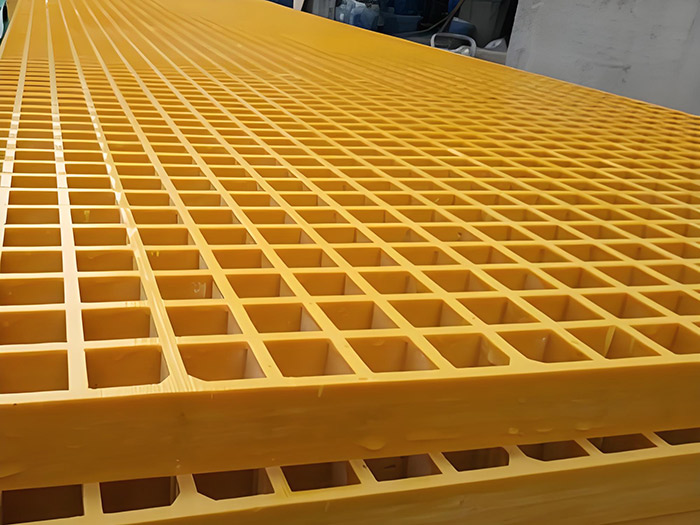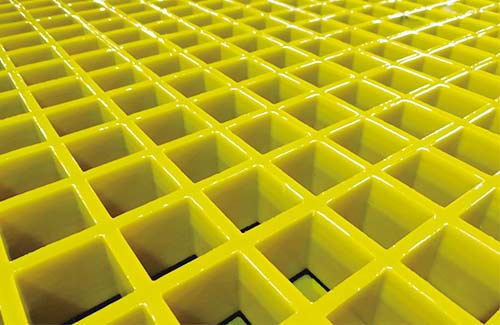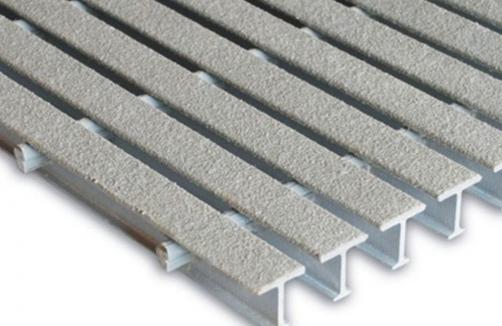Caillebotis FRP recyclables : Solutions de revêtement de sol durables pour les applications industrielles
Industrial flooring solutions require a balance of durability, safety, and sustainability. Traditional materials like concrete or steel often come with high maintenance costs and environmental impacts. Recyclable Fiber-Reinforced Polymer (FRP) grating has emerged as a superior alternative, offering long-term benefits for various industrial applications. But what makes FRP grating stand out? How does it contribute to sustainability? And what are the key advantages for industrial settings? Let’s explore these questions in detail.
What Makes FRP Grating Recyclable and Sustainable?

FRP grating is a composite material made from fiberglass and polymer resins, providing a lightweight yet strong alternative to traditional materials. One of its most significant advantages is its recyclability. Unlike concrete, which requires demolition and disposal, or steel, which is difficult to recycle without losing quality, FRP can be reused or recycled without compromising its structural integrity.
This sustainability is achieved through several factors:
– Longévité: FRP grating withstands harsh industrial conditions, reducing the need for frequent replacements.
– Conception légère: It minimizes the load on supporting structures, reducing the environmental impact of construction.
– Résistance chimique: FRP does not rust, corrode, or degrade when exposed to chemicals, making it ideal for industrial environments.
By choosing FRP grating, industries can significantly reduce their carbon footprint while maintaining high performance.
How Does FRP Grating Benefit Industrial Applications?
Industrial flooring faces unique challenges, including heavy loads, chemical exposure, and constant wear. FRP grating addresses these issues effectively:
1. Durability and Strength
FRP grating can support heavy loads without cracking or deforming, making it suitable for warehouses, factories, and loading docks. Its non-slip surface also enhances safety, reducing the risk of accidents.
2. Résistance à la corrosion
In environments with moisture, chemicals, or salt, FRP grating remains unaffected, unlike steel or concrete. This makes it ideal for marine, automotive, and chemical processing industries.
3. Low Maintenance Costs
Unlike concrete, which requires sealing and cracking repairs, FRP grating requires minimal maintenance. This saves industries time and money in the long run.
4. Solutions personnalisées
FRP grating can be manufactured in various sizes, shapes, and load capacities, offering tailored solutions for specific industrial needs.
Le caillebotis FRP est-il rentable ?
While the initial cost of FRP grating may be higher than traditional materials, its long-term benefits make it a cost-effective choice. Factors contributing to its affordability include:
– Extended Lifespan: Reduces replacement costs.
– Lightweight Installation: Saves on labor and material运输 costs.
– Lower Maintenance: Eliminates ongoing repair expenses.
Many industries find that the return on investment for FRP grating is substantial, especially when considering its sustainability benefits.
Sharing Insights: Why Industries Are Switching to FRP Grating
Companies across various sectors are adopting FRP grating for its environmental and performance benefits. For example, a leading automotive manufacturer replaced its concrete loading platforms with FRP grating, achieving:
– 30% Reduction in Maintenance Costs
– Improved Safety Due to Non-Slip Surface
– Easier Compliance with Sustainability Goals
These success stories highlight FRP grating’s ability to meet industrial demands while promoting sustainability.
Conclusion: The Future of Industrial Flooring
Recyclable FRP grating offers a sustainable and durable solution for industrial flooring challenges. By addressing durability, safety, and environmental concerns, it stands out as a smart choice for industries looking to modernize their facilities. As sustainability becomes a priority, FRP grating will likely play an increasingly vital role in industrial applications worldwide.
If you’re considering upgrading your industrial flooring, exploring FRP grating could be the first step toward a more sustainable and cost-effective future.







